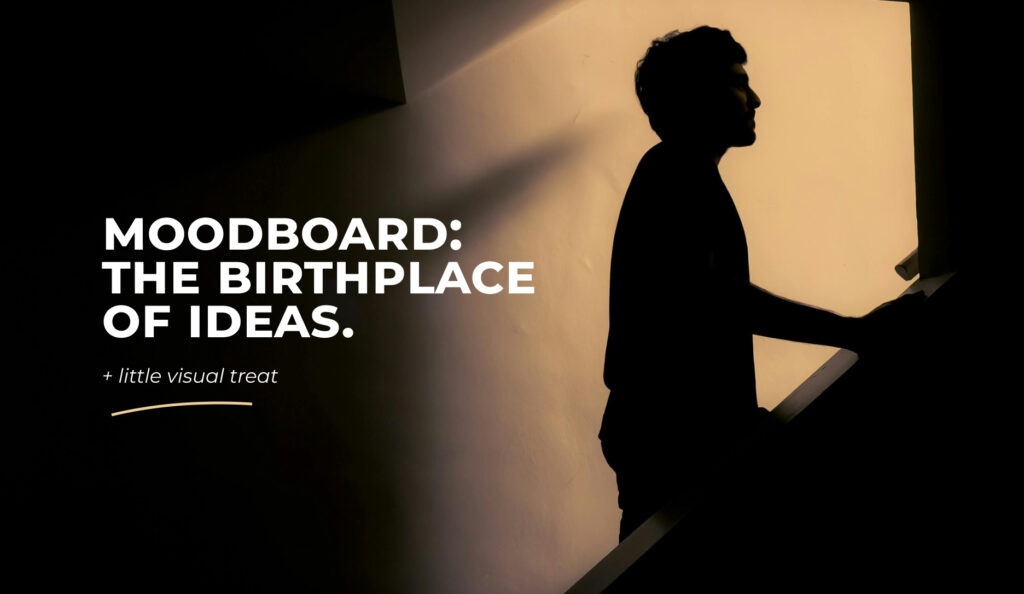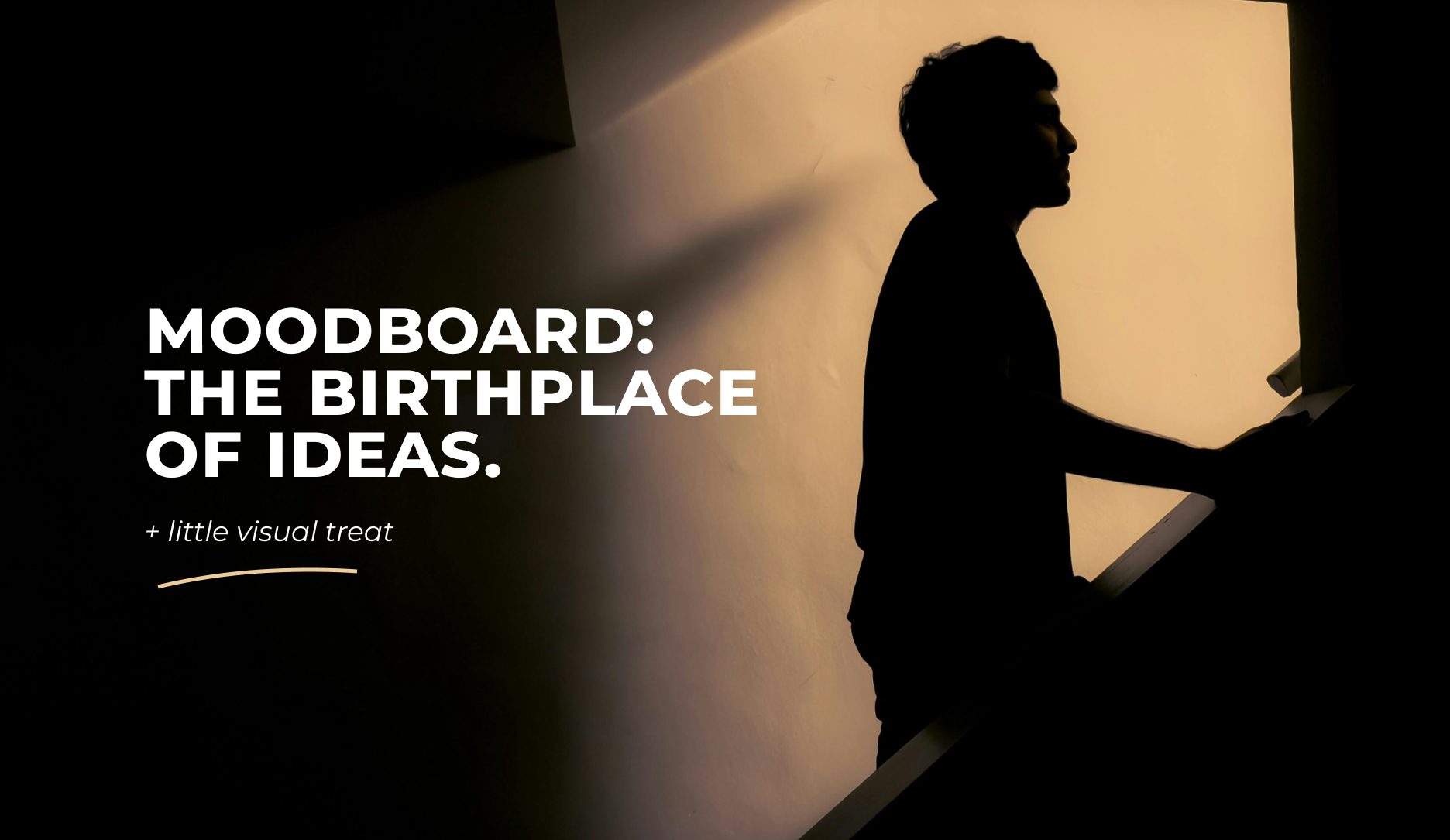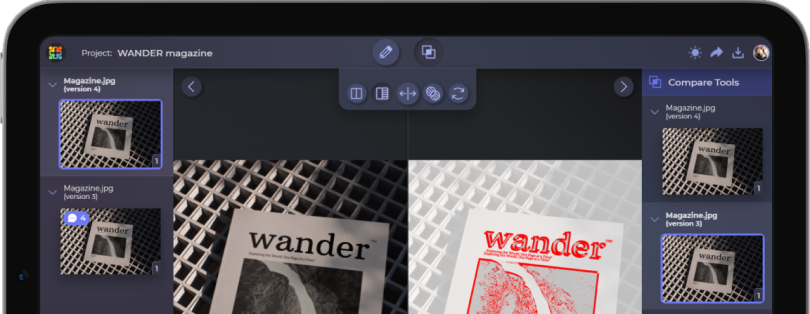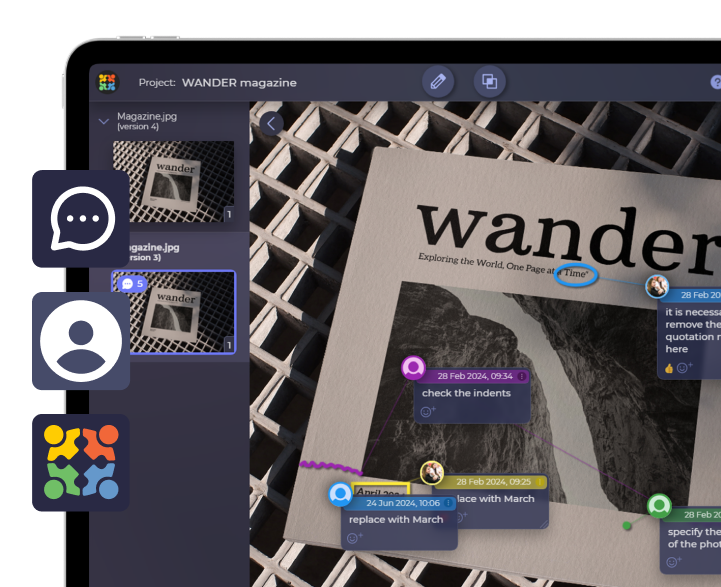Dear readers, do you ever have a moment when your breathing slows down and the client says again, “We want something modern, but also nostalgic?” That’s when, somewhere between the seventh Chrome tab open and the fifth existential crisis about choosing “the same” font, a moodboard quietly saves the life of your project. Not with logic, but with vibrations, because before you know what your design needs, a moodboard jumps into the game with the words.
Designers often talk about strategy, concept, and direction. Beneath these technical layers lives something more instinctive: a creative impulse that doesn’t arrive fully formed, only whispering and hinting at possibilities. Moodboards are meant to capture this impulse and shape it into something tangible, yet they’re often misunderstood.
Too many people see them as Pinterest collages: a sunset here, a latte there, a trendy font to tie it all together. Nice to look at? Sure. Enough to guide a project? Not really. A real moodboard goes deeper. It isn’t decoration but communication, a way to capture instinctive creative impulses and turn them into something concrete. Done right, it carries the DNA of a brand, sets the project’s energy, and becomes the bridge between intuition and execution long before the first mockup is made. In this article, we’ll show you how to create a moodboard that truly does all of this.
Table of contents:
Step 1: Ask the right questions before you start
Let’s be honest: clients don’t always speak the same language as designers. In the first meeting, you’ll hear plenty of abstract words — elegant, organic, timeless. Nice, but not enough to build on. That’s where the brief comes in. We’ve already explored the impact of a well-prepared brief in our article Why is a Creative Brief Important? — and it’s worth repeating: it’s not paperwork, it’s your compass. A good brief helps you turn vague impressions into clear keywords you can design with. Instead of jumping straight into fonts and colours, dig deeper. Ask questions like:
- What is your brand trying to say without words?
- What feelings should people experience the first time they see your product?
- If your brand were a place, what kind of place would it be?
- What five words describe your brand best?
Imagine your client launching a perfume called Reflection — a fragrance inspired by nature’s shimmering surfaces. From the brief, you distil keywords like light, water, radiance, organic, mystical, and pure. These become your inner compass. Later, when choosing images for your moodboard, you won’t rely on personal taste — you’ll return to these words to guide you.
Step 2: Start searching for visuals that match the mood
Now that you have your keywords, it’s time to explore visuals. Think of this step as casting a wide net — the editing will come later. Right now, gather everything that resonates with your mood. Start with the most popular platforms:
- Cosmos is my favourite, and I highly recommend it for its AI tagging and colour search.
- Pinterest — still the classic for mood discovery.
- Behance / Dribbble — to see how others visualise similar vibes.
- Unsplash / Pexels — free, high-quality photography for textures and atmospheres.
Don’t search for “perfect” images. Collect anything that feels like your keywords, even if it comes from fashion, interiors, or music. Curation comes later. For now, let your ideas roam.
For our perfume example, Reflection, whose keywords are light, water, radiance, organic, mystical, pure, searches can look like:
- Ethereal light
- Mystical water reflections
- Pearl colour palette
- Radiant packaging
Step 3: Collect, then start organizing
This is the messy, fun stage where you start to shape your moodboard. First, choose a place where you will store and organise your finds. Figma and Figma Jam, MIRO, or CANVA are good options for flexible organisation.
Then, collect everything that resonates with your keywords. This could include photos, illustrations, UI screenshots, packaging examples, textures, fonts, or objects that convey a mood. Think significant—even elements from fashion, interiors, or album covers can enrich your moodboard.
Once your collection feels rich enough, start organising your materials. Group similar tones and textures together, highlight contrasts where necessary, and focus on clarifying the emotional tone at a glance. There is no single “right” structure: your moodboard can be a loose collage, a clean grid, a thematic strip that goes from warm to cool, or a central image surrounded by supporting details. At this stage, it’s not about perfection but about transforming the collected inspiration into a coherent visual story.
Step 4: Add annotations — add meaning to the images
It might seem like the same Pinterest board we discussed earlier, but a moodboard becomes truly valuable when you explain your choices. Without annotations, it’s just a pretty collection of images. With them, it becomes a clear proposition that conveys your creative vision. Annotations help clients and colleagues understand why each element is there — an emotion, texture, color, or shape — and how it contributes to the overall mood and message.
Using a tool like Approval Studio makes this process seamless. You can upload your moodboard and place comments directly on the images, allowing employees to leave feedback in context. That way, your moodboard reflects the vision and actively facilitates discussion and agreement.
Step 5: Clean Up and Present Your Moodboard
Take a step back and look at your moodboard with a fresh eye. Ask yourself: Does it convey the mood in a few seconds? Is there anything confusing, repetitive, or out of place? Delete a few images, adjust spacing, and emphasise key colours. Think of it as editing a photo—remove distractions and clear the message.
After cleaning up, it’s time to present it as a story. Don’t just say, “Here’s the board, ” whether in person or via email. You should frame it with words. For Reflection, you might explain, “This board shows a mystical but pure feeling. The shapes and textures of the bottles feel natural with a touch of magic, while the typography is modern yet soft, matching the mood.”
Bonus: Name Your Board
It might sound small, but giving your moodboard a name gives it personality. A good name creates emotional buy-in — clients remember it, you remember it, and it feels like a thing, not just a folder of images.
Wrapping Up
Moodboards aren’t just pretty Pinterest snapshots. As the first real step after the brief, a moodboard sets the tone, aligns everyone on the vision. They help you trust your direction and avoid 47 rounds of “can we make it more fun but more serious?” And best of all, they’re fun. Seriously. A good moodboard doesn’t just look good. It feels right. And that’s what design is all about. And Approval Studio will turn your moodboards into a space for clear feedback and team alignment.

 TEAM SOLUTIONS
TEAM SOLUTIONS WORKFLOW SOLUTIONS
WORKFLOW SOLUTIONS



 REVIEW TOOL
REVIEW TOOL PROJECT MANAGEMENT
PROJECT MANAGEMENT TOOLS & INTEGRATIONS
TOOLS & INTEGRATIONS
 CLIENT INTERVIEWS
CLIENT INTERVIEWS












